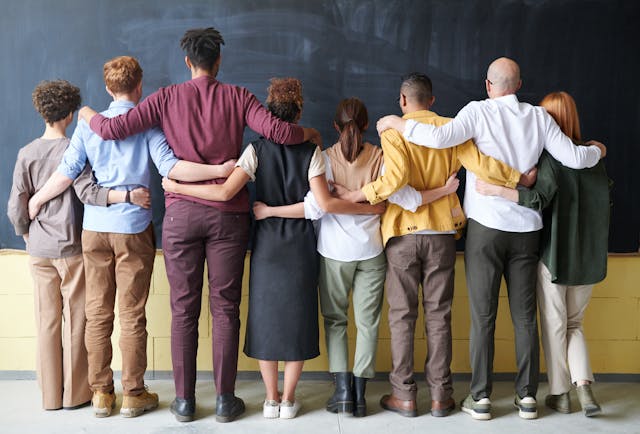In our diverse society, workspaces are a melting pot of races, cultures, and abilities. Nevertheless, achieving genuine inclusion within this diversity can be an uphill task. So, how can we, as recruiters or part of a diverse workforce, cultivate a truly inclusive environment that appreciates everyone’s unique identities? This article seeks to provide a roadmap for redesigning and fostering a workspace that is receptive to ethnic and disability diversity.
Table of Contents
Equity: Moving Beyond Equality
To promote inclusivity, the distinction between equality and equity is fundamental. While equality provides everyone with identical resources, equity emphasises offering individuals what they specifically need to succeed, acknowledging that these needs may differ greatly. In an equitable workspace, opportunities, and support are customised to reflect individuals’ unique circumstances and needs, taking into account ethnic cultural subtleties and disability accommodations.
Improving Accessibility: Fostering Disability Inclusion
Individuals with disabilities bring valuable perspectives and skills to the table, yet often face physical and systemic barriers in conventional workspaces. Initiating disability inclusion starts with enhancing physical accessibility, such as providing wheelchair-accessible facilities. But, the concept extends beyond the physical realm.
Inclusion also involves retooling work processes and resources to accommodate diverse abilities. For example, recruiters can advocate for and implement software that’s accessible for visually or hearing-impaired candidates. Further, recruiters should promote the use of inclusive language in job descriptions and throughout the hiring process.
Cultivating Cultural Sensitivity: Encouraging Ethnic Diversity
Appreciating ethnic diversity extends beyond simply recognising different cultural backgrounds. It necessitates the cultivation of a work culture that values these disparities. This includes understanding and respecting cultural nuances in communication styles, work ethics, and even celebrating cultural holidays.
As part of the recruiting process, understanding the cultural contexts of candidates can lead to more sensitive and effective hiring practices. It also helps in creating a sense of belonging and respect among the workforce, which ultimately leads to higher job satisfaction and productivity.
Conclusion
Crafting an inclusive workspace is an ongoing journey of learning, understanding, and putting into practice measures that appreciate diversity. It’s more than just recognising differences – it’s about cherishing and leveraging them for the mutual benefit of individuals and the organisation. All of us, as recruiters and members of a diverse workforce, have an important role to play in nurturing inclusivity.
Key Takeaways
- Inclusion in the workspace is about equity, providing each individual with the necessary resources to succeed.
- Disability inclusion requires accessible physical infrastructure and inclusive work processes.
- Embracing ethnic diversity means valuing and appreciating cultural differences and nuances.
- Building an inclusive workspace is a continuous process of learning and adapting inclusive practices.


